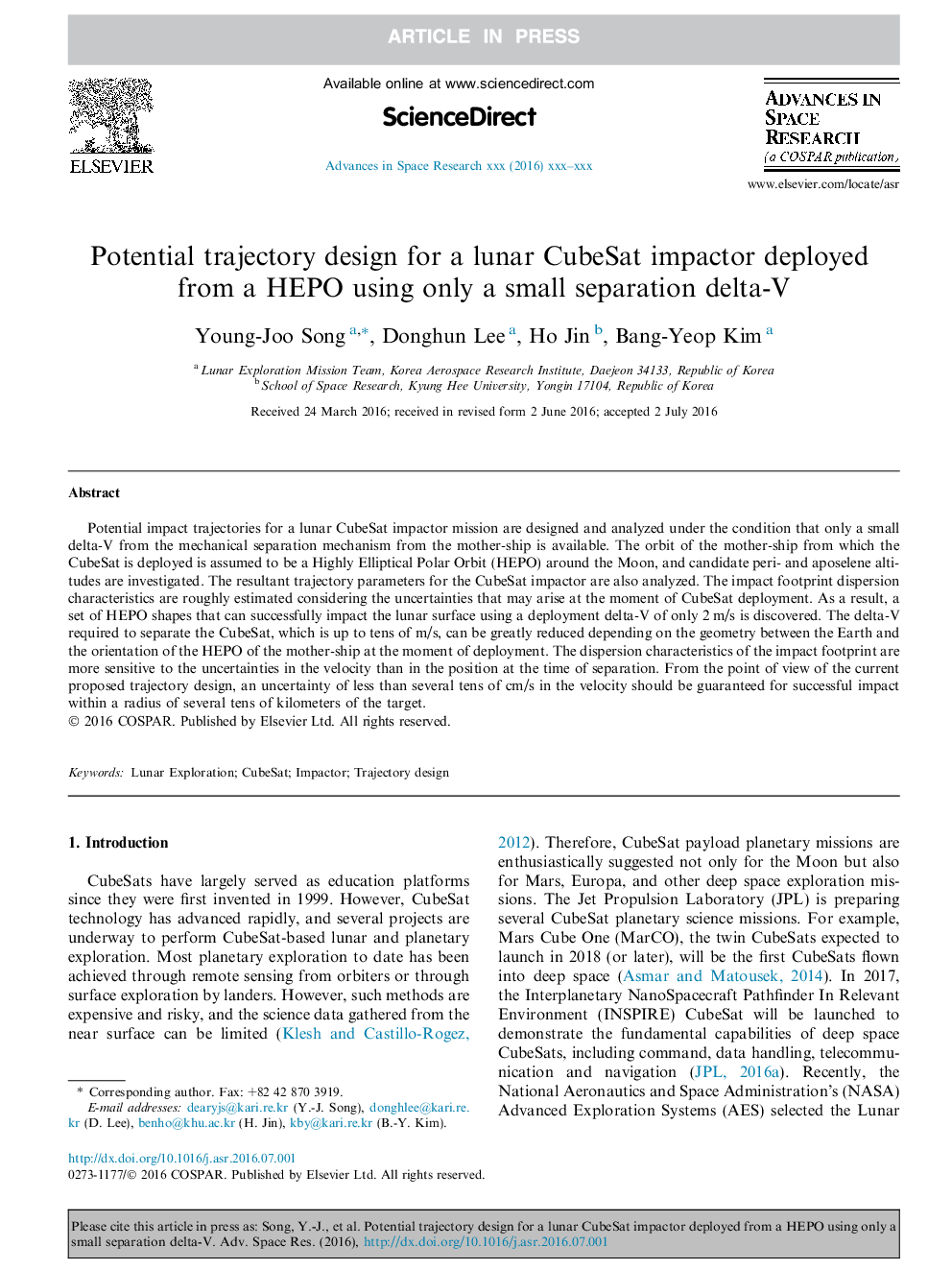| Article ID | Journal | Published Year | Pages | File Type |
|---|---|---|---|---|
| 5486311 | Advances in Space Research | 2017 | 12 Pages |
Abstract
Potential impact trajectories for a lunar CubeSat impactor mission are designed and analyzed under the condition that only a small delta-V from the mechanical separation mechanism from the mother-ship is available. The orbit of the mother-ship from which the CubeSat is deployed is assumed to be a Highly Elliptical Polar Orbit (HEPO) around the Moon, and candidate peri- and aposelene altitudes are investigated. The resultant trajectory parameters for the CubeSat impactor are also analyzed. The impact footprint dispersion characteristics are roughly estimated considering the uncertainties that may arise at the moment of CubeSat deployment. As a result, a set of HEPO shapes that can successfully impact the lunar surface using a deployment delta-V of only 2Â m/s is discovered. The delta-V required to separate the CubeSat, which is up to tens of m/s, can be greatly reduced depending on the geometry between the Earth and the orientation of the HEPO of the mother-ship at the moment of deployment. The dispersion characteristics of the impact footprint are more sensitive to the uncertainties in the velocity than in the position at the time of separation. From the point of view of the current proposed trajectory design, an uncertainty of less than several tens of cm/s in the velocity should be guaranteed for successful impact within a radius of several tens of kilometers of the target.
Related Topics
Physical Sciences and Engineering
Earth and Planetary Sciences
Space and Planetary Science
Authors
Young-Joo Song, Donghun Lee, Ho Jin, Bang-Yeop Kim,
